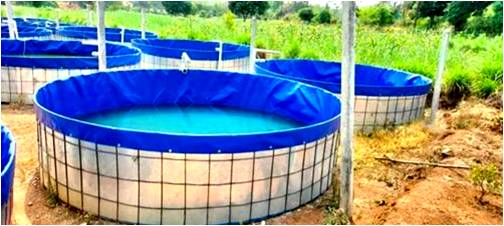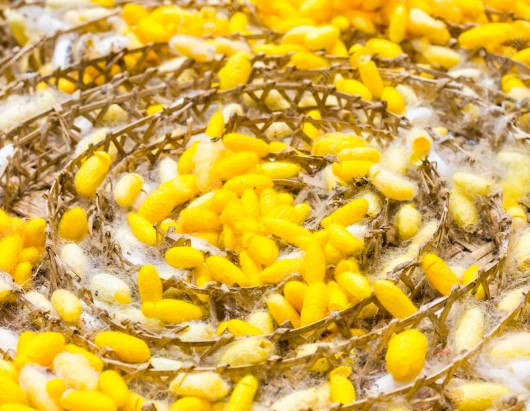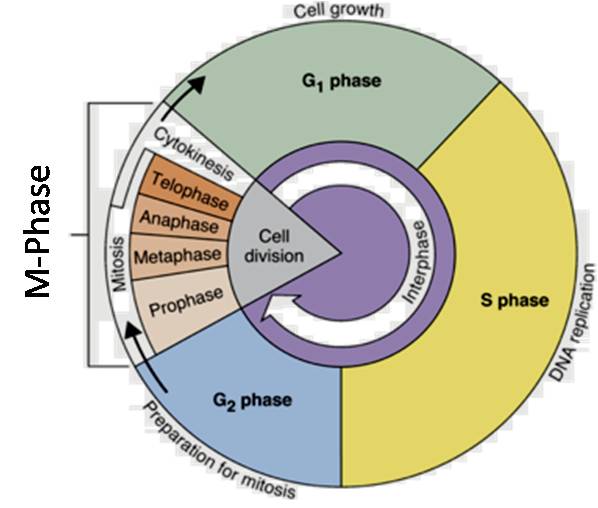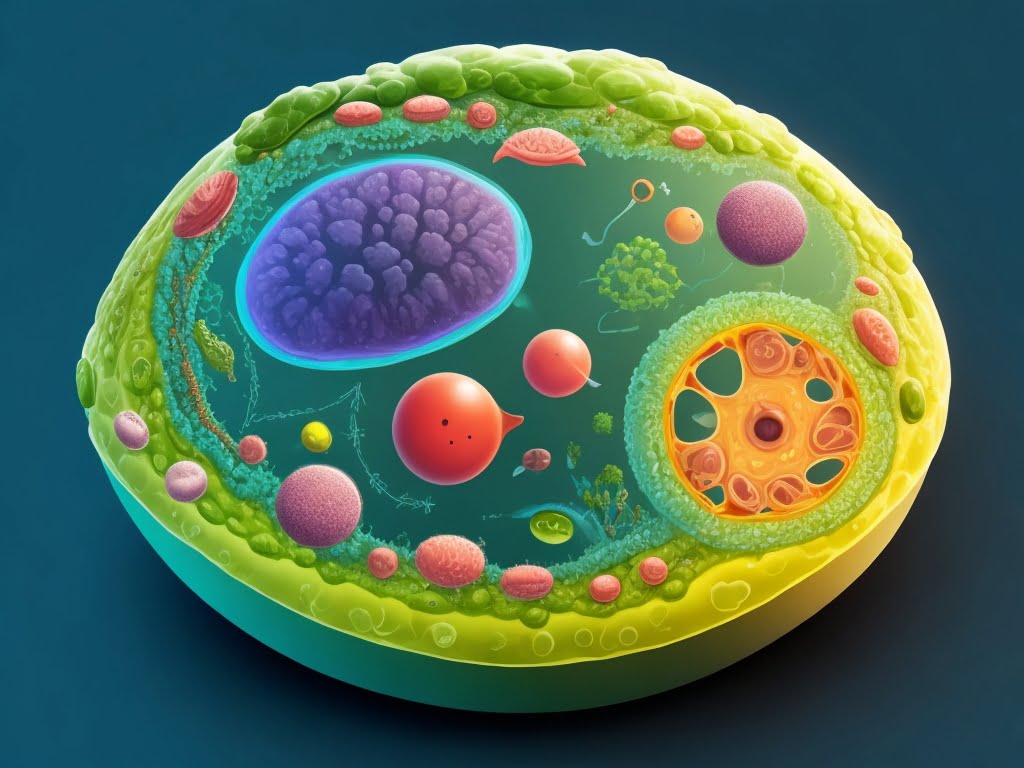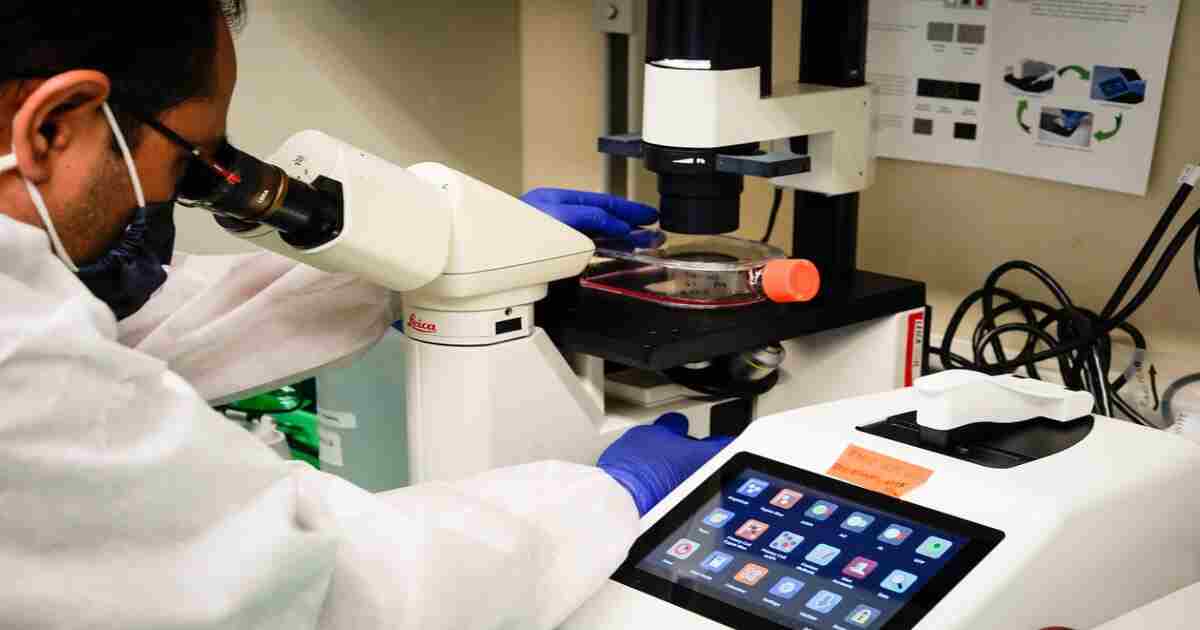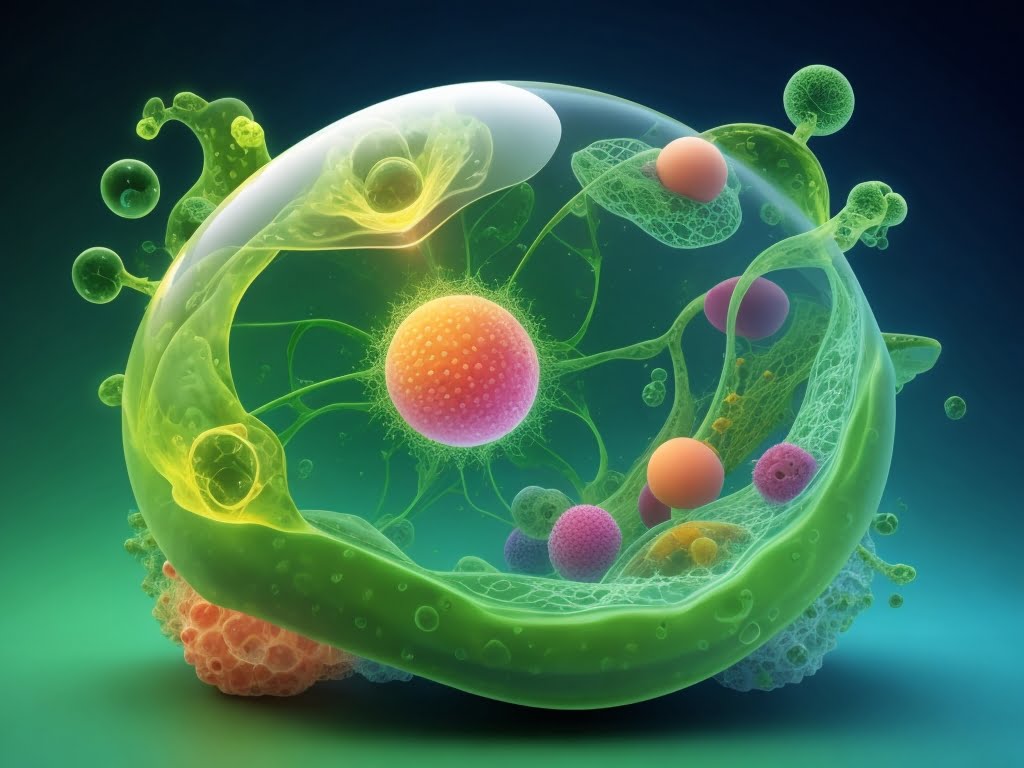Nucleus: Nucleus contains the genome, which is the cell’s genetic database encoded in Deoxyribonucleic Acid (DNA). It is the largest organelle of the cell.
Nucleus Structure:
The structure of the nucleus (in a eukaryotic cell) includes several key components that together regulate genetic material and cellular function. It includes- 1)Nuclear Envelope 2)Nucleolus 3) Nucleoplasm 4)Chromatin and DNA
1) Nuclear Envelope:
It encloses nuclear material and consists of outer and inner membranes separated by a narrow perinuclear cisterna. Membranes fuse with each other at intervals to form nuclear pores.
a) Outer Nuclear Membrane: It faces cytoplasm and is continuous with Rough Endoplasmic Reticulum (RER) at certain points. Loosely arranged network of intermediate filaments called as Vimentin, surrounds it on cytoplasmic side. Ribosomes cover the cytoplasmic surface and synthesize proteins that enter perinuclear space.
b) Inner Nuclear Membrane: it is supported on its inner surface by Nuclear lamina, which is fibrous lamina consists of Lamins A, B, and C. Phosphorylation of Lamins: disassembly of nuclear envelope Dephosphorylation of lamins: reassembly of nuclear envelope in Mitosis.
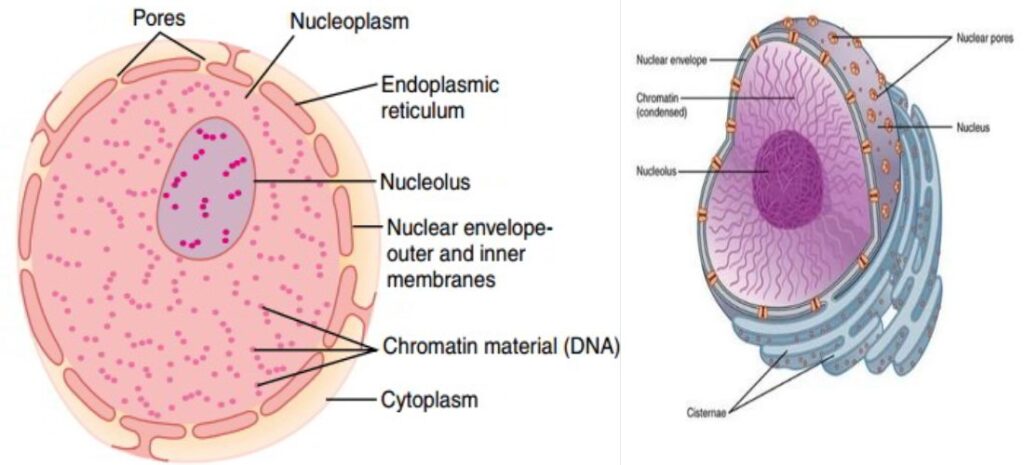
Figure: Structure of Nucleus
c) Perinuclear Space: it is continuous with cisterna of RER.
d) Nuclear Pore Complex (NPC):
It consists of around 100 proteins, some are arranged in eightfold symmetry around the margin of nuclear pores. It is responsible for receptor mediated transport across membrane. It consists of Cytoplasmic ring, located around cytoplasmic margin composed of eight subunits, each having cytoplasmic filament which serve as staging area prior to protein transport. Cytoplasmic filaments have Ran/GTP binding proteins.
Nucleoplasmic ring, located around nucleoplasmic margin and consists of eight subunits. Nuclear basket, a basket like structure extends into nucleoplasm. Distal ring is attached to this distal end of the basket which assists export of RNA into cytoplasm. Luminal Ring, consists of eight subunits formed between cytoplasmic and nuclear rings. It also has luminal spoke ring and luminal subunits which are supposedly play a role in transport.
Function:
- NPC allows receptor-mediated transport of proteins. These proteins have clusters of some amino acids called as nuclear localization segments (NLS). NLS acts as signals for transport.
- Transport mechanism: Exportin and importin proteins take part in the transport. These are regulated by Ran, a group of GTP-binding proteins.
- Nucleoporins facilitate shuttling of cargo in both directions, signalled by Nucleocytoplasmic shuttling (NS) signals.
e) Nuclear Pores: These are formed by the fusion of the inner and outer nuclear membranes.
2) Nucleolus:
It is not surrounded by membrane and more than one nucleolus can be present in nucleus. It is observed in interphase cells synthesizing proteins. It contains of rRNA, Proteins and some amount of DNA. It has Nucleolar organizer regions (NORs) where rRNA genes are present. NORs are involved in reconstituting the nucleolus during G1 phase of cell cycle.
Structure: It has four regions.
- 1. Fibrillar centers: contains inactive DNA and NORs.
- 2. The pars fibrosa: contains fibrils, transcriptionally active DNA and the rRNA precursors.
- 3. The pars granulosa: contains maturing ribosomal precursor particles.
- 4. Nucleolar matrix: it is a fiber network which take part in the organization of the nucleolus.
Function: Synthesize rRNA. Sequester Cell cycle checkpoint signaling proteins and Cell cycle regulator proteins
3) Nucleoplasm:
It is the protoplasm within the nuclear envelope and consists of a matrix and various types of particles.
a) Nuclear Matrix: consists of fibrillar elements, nuclear lamina complex and residual nucleoli. It is involved in transcription and processing of mRNA and rRNA. Nucleoplasmic reticulum is continuous with ER of the cytoplasm.
b) Nuclear particles: a)Interchromatin granules: clusters of particles that contain ribonucleoprotein (RNP) and various enzymes. b)Perichromatin granules: These may represent messenger RNPs (mRNPs).
Function:
Processing of pre-mRNA It is the site of synthesis of DNA, RNA and ribosomal subunits.
4) Chromatin:
It consists of double-stranded DNA complexed with histones and acidic proteins present as:
a) Heterochromatin: It is condensed inactive chromatin. Scattered throughout nucleoplasm but concentrated at the periphery of the nucleus and around nucleolus. Barr body or Sex chromatin is the dark-staining inactive X-chromosome visible during interphase. It corresponds to one of two X chromosomes.
b) Euchromatin: It is the transcriptionally active form of chromatin which appears as lightly stained region of the nucleus in light microscope.
Function: Chromatin is responsible for RNA synthesis.
5) Chromosomes:
Consists of chromatin extremely folded into loops. This conformation is maintained by DNAbinding proteins.
a) Extended chromatin: It forms the nucleosome core around which the DNA double helix is wrapped two full turns. The nucleosome core consists of two copies each of histones H2A, H2B, H3, and H4.
b) Condensed chromatin: It contains an additional histone H1, which wraps around groups of nucleosomes, thus forming fibers of helical coils of six nucleosomes per turn, which is the structural unit of the chromosome.
c) Karyotype: It refers to the number and morphology of chromosomes. 1. Haploid (n): 23 chromosomes in germ cells 2. Diploid (2n): 46 chromosomes in somatic cells
d) Genome: It is an organism’s complete set of DNA, including all of its genes. In humans, the genome consists of 22 pairs of autosomes and 1 pair of sex chromosomes (either XX or XY).
Summary in short
| Component | Description | Function |
|---|---|---|
| Nuclear envelope | Double membrane | Protects and regulates access |
| Nuclear pores | Protein channels in envelope | Transport molecules |
| Nucleoplasm | Fluid inside nucleus | Medium for molecular activities |
| Chromatin | DNA + proteins | Genetic information storage |
| Nucleolus | Dense region inside nucleus | Makes rRNA and ribosomal subunits |

